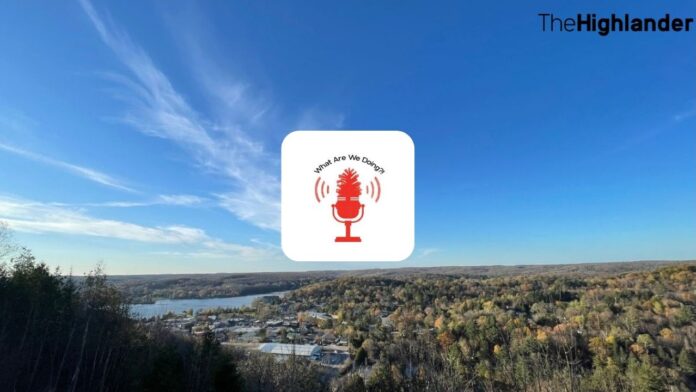According to the 2021 Census, Haliburton’s population has grown nearly 14 per cent since 2016. Many lakefront property owners have noticed the bump: our County’s lakes are growing busier and busier and property values and building activity have skyrocketed since the early 2000s.
A lake assessment, completed in partnership with the Coalition of Haliburton Property Owners Associations, showed only 46-47 per cent of shorelines surveyed in Haliburton County are still natural.
Experts say 75 per cent should be “naturalized” to help a lake stay clean.
In 2020 the County of Haliburton first circulated a draft shoreline preservation bylaw.
Nearly immediately, landscapers, construction companies and many residents took issue with the way the matter was being handled, or whether the public had enough time to weigh in. Over the next few months, Council heard waves of criticism over the draft bylaw, specifically its lengthy application process and restriction of development within 30 metres of the water. In January 2021, they decided to get help.
They hired Hutchinson Environmental and J.L Richards to lead a review of the bylaw, get the public’s opinion and draft a new one. The consultants began work that spring.
More than 18 months later, in August of this year, council passed a new shoreline preservation bylaw.
This paper has written more than a dozen articles on the bylaw, the reasons behind it, and the criticism it stirred up, but here are the basics: the province of Ontario recommends limiting development near water bodies within the Precambrian Shield (which includes Haliburton County).
Multiple environmental scientists I and my colleagues spoke with echoed a need for stronger protections against overdevelopment on Highlands’ lakes, to preserve wildlife habitat and prevent pollutants from entering our waterbodies.
However, many Highlanders said they felt they weren’t listened to during the consultation period before the bylaw was passed.
A petition signed by more than 200 landowners claimed that J.L Richards’ method of interviewing lake associations may give the wrong impression of landowner sentiments, especially when some lake associations don’t count all lake residents as members.
Nearly all lake associations are members of the CHA, which publicly supported the creation of a shoreline preservation bylaw.
Others claimed the bylaw might halt the development of new builds while not addressing the many lake-front lots that are mowed or developed in contradiction to the bylaw.
Still, more claimed that septic systems aren’t taken into account.
Faulty septic systems can lead to pollutants leaching into soil and, eventually, water bodies. However, many seem to be misinformed about key aspects of the final document and current events.
For instance, routine tree maintenance and trimming is allowed, and several stipulations about tree cutting were already enshrined in the County’s 2018 tree preservation bylaw, which this new document adds too. You can still build a sizeable path to the waterfront.
As well, municipalities have already completed hundreds of septic inspections, most completed by contracted student staff, this summer alone. Before the final council vote, Dysart et al mayor Andrea Roberts mentioned a new council could vote to overturn the bylaw. She’s right. Councillors can change the bylaw too, which has been described by many as a “living document”.
Some candidates in this year’s election have campaigned on promises to change or overhaul the bylaw.
The shoreline preservation bylaw is the most significant and controversial decision this County council has made.
But the bylaw will affect homeowners from Gooderham to Dorset, with municipal councillors playing a role in handling complaints or criticism too. We’re asking each candidate how they feel about the final document. We hope they’ve read it.




